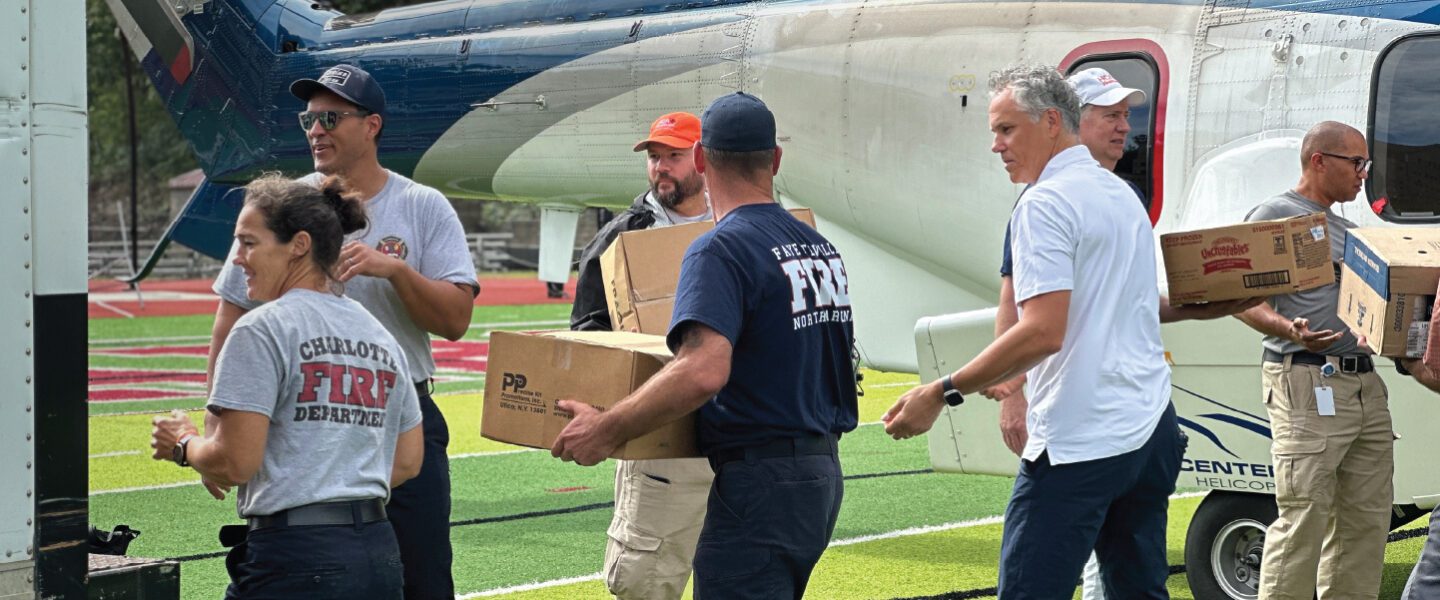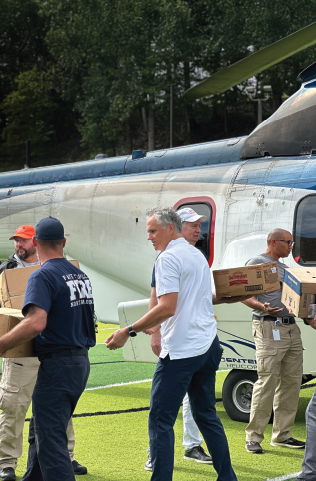Jyric Sims
President, West Florida Division
What did preparation plans look and feel like as you all followed early reports of Milton’s arrival?
HCA Healthcare has a robust storm response plan in place – we’ve been around for 50 plus years. I also think, conducting healthcare in Florida, hurricanes are part of doing business here. Four to five days out, we were getting the reports of a tropical formation. Once it became more of a credible threat, HCA Healthcare’s emergency operations structure in Nashville plugged into our emergency operations structure here.
With HCA Healthcare, the emergency response structure is embedded in what we do, it’s who we are. We have hurricane simulations and disaster preparedness simulations before hurricane season even starts.
What felt unique about this particular event?
Every storm has a different personality and a different makeup and trajectory. But the muscle memory around preparation is pretty well ingrained. Pre-positioning assets, collaboration and communication are paramount.
I was born and raised in Baton Rouge, Louisiana so being part of hurricanes is certainly nothing new. But it’s different when you’re responsible for 17 hospitals and 23,000 colleagues and a host of other assets spread up and down the coast. I’m fortunate to have a lot of leaders in the division and facilities who have endured storms as well. Just three years ago Hurricane Ian affected our market, so there’s that muscle memory again.
How did you prioritize what was needed immediately?
For our division, Hurricane Helene was more of a storm surge event. We started to see storm surges of between eight and twelve feet in some areas, so our response there was specific to Tiger Dams around flood-vulnerable hospitals and transferring patients from flood zones. We had generators prepositioned and response crews ready for Helene.
But the unprecedented nature of the way Milton came through Mexico and angled straight for Florida, I don’t think has ever happened before. It grew to a Category 5 within about 48 hours. We got our A and B teams ready and we were able to evacuate four hospitals and de-risk several others, transferring the most critical patients more inland to sister hospitals and our community hospitals as appropriate.
Things started escalating quickly during Milton, how did that impact your priorities?
Our Largo Hospital is a critical hospital because of our transplant programs. We had two hundred plus patients there at the time of the Milton event. We got so much rain that it flooded the basement of the hospital that housed our boilers, chillers, kitchen, sterile processing for the ORs, all of our plant operations and IT. We had heroic plant operations leaders, our chief operating officer and VP of operations, down in the basement trying to get the water out and secure the door. We had critical care patients without electricity on mechanical devices that would fail if we didn’t get them recharged. It was serious, and we did not have a single adverse clinical patient outcome during that time.
It definitely sounds like HCA Healthcare colleagues rose to the occasion.
We lost power at Largo, had no electricity, it’s three in the morning with winds at more than 50 miles an hour, and we could not get any EMS or transfer agency to come get our patients. Agency entities are constrained by some logistics and some protocols. So we called on our HCA Healthcare colleagues. We had five transfer rigs at HCA Florida Brandon Hospital to the east who we called, and their response was, “We’re built for this.” They got in their EMS rigs in the cover of darkness and drove through the pitch black for two and half hours. They were the first ones on the scene. In that moment, it was HCA Healthcare taking care of HCA Healthcare and that’s what I’ll always remember. They were the heroes. Our teams were the heroes.
It is certainly a testament to the way everyone was ready to respond. How were you all prepared emotionally and mentally?
The first thing is your mindset. We wanted to have clear and consistent communication and to engage a sense of confidence in the plan that we had. We were as prepared as we could be. We had to reorganize ourselves with leaders and individuals who had just survived Helene. So it was also important to allow time for individuals to go home or make sure their families were okay, make sure their homes were secure and to shore up any family dynamics so that, when we ride out the storm, we are mentally prepared to get through it.






